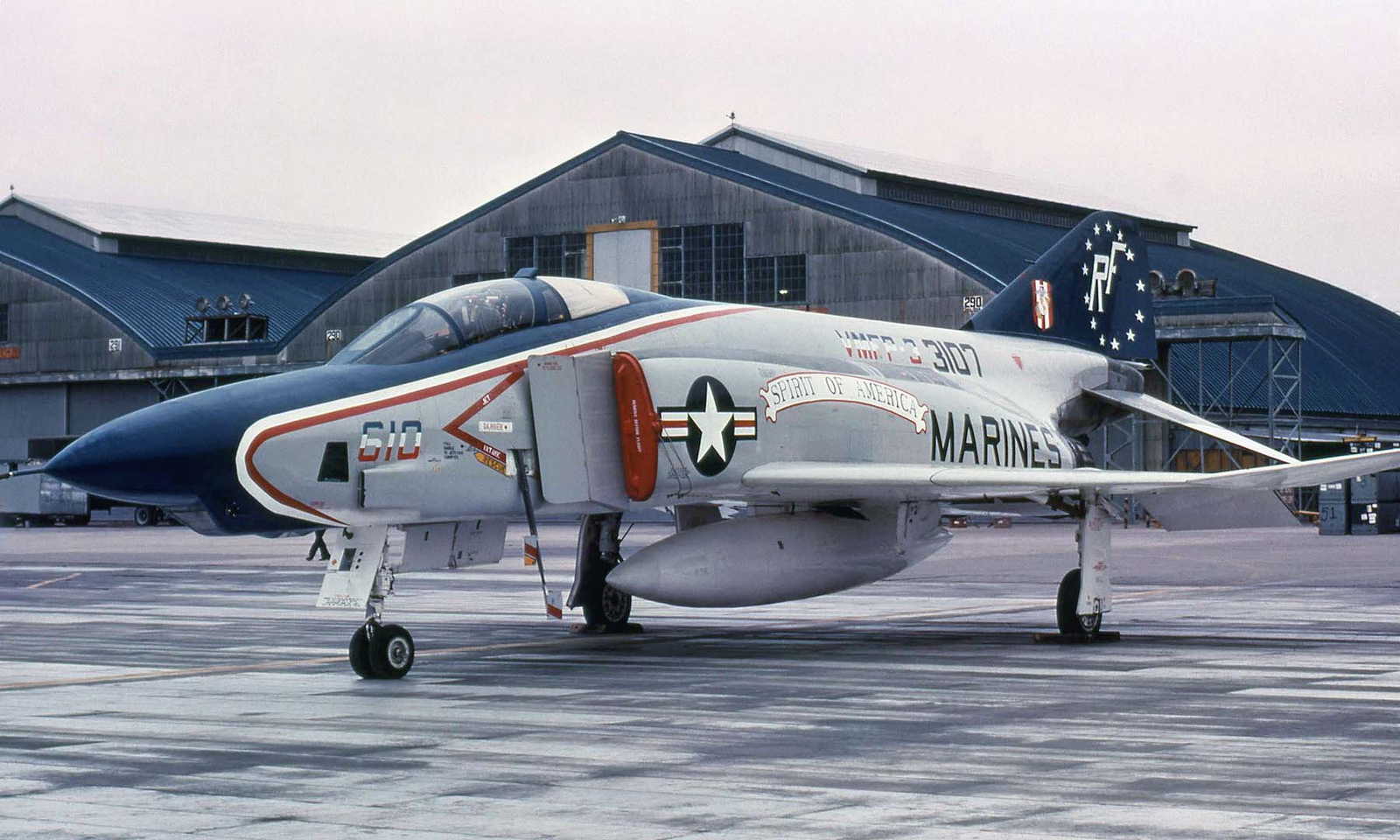
The McDonnell Douglas F-4 Phantom II was a Cold War workhorse, to say the least—it was a legend. Its wailing engines, powerful structure, and its multipurpose combat abilities made it an iconic fixture of history. Not every Phantom, however, had its day in the sun. Behind the familiar shape, we see a few daring, experimental variants that never saw the light of day—planes so radical they risked jumping ahead of even next-generation fighter jets.

Let’s count down five of the most interesting Phantom variants that remained earthbound—and how each captures the intricate dance between ambition, technology, and politics.

5. RF-4M “Big Nosed Brit” – A Reconnaissance Upgrade That Never Flew
In the 1960s, the British Royal Air Force flirted with the idea of building a dedicated reconnaissance version of its Phantom fleet. This variant, the RF-4M, would have stretched the Phantom’s nose by more than two feet to house built-in cameras, eliminating the need for external pods and improving range by freeing up space for an extra fuel tank.

It was a clever idea: lighter, longer ranged, and built with dedicated spycraft in mind. But ultimately, budget constraints and the need for flexibility took priority. Rather than a tailored jet, the RAF opted for modular recon pods that could be bolted to any Phantom. The “big nose” never materialized, but the trend toward modular capability would be something future multi-role aircraft designs would follow.

4. F-4E(F) “Ein Mann” – Germany’s Lone Pilot Solution
Seeking to reduce costs in the 1970s, the German Luftwaffe considered a radical remaking of the Phantom: a single-seat variant known as the F-4E(F), or “Ein Mann” (One Man). The objective? Streamline the plane, reduce the weight, and lower the cost.

It was a lofty concept, but in the end, not a viable one. The Phantom was filled with advanced avionics and mission systems—more than one pilot could handle convincingly in high-risk missions. Germany settled for the F-4F instead: still sleek, but with the initial two-seater design preserved. The “Ein Mann” idea was quietly dropped.

3. RF-4X – Israel’s Speed Demon That Never Saw the Sky
In the 1970s, Israel required a high-speed, high-survivability reconnaissance aircraft, and the RF-4X was the solution. Around a huge 22-foot-long, 4,000-pound camera pod, the RF-4X was almost missile-like in appearance. The engineers had suggested heavy-duty engines with water injection and aerodynamic modifications to take their top speed beyond Mach 3.2. Yes, you’ve got it right: more than three times the speed of sound.

The concept was ambitious, perhaps too ambitious. The pod’s drag, possible safety concerns, and American concerns that the project would overshadow the still-emerging F-15 ensured it never received approval. Israel attempted to go it alone in further development, but the technical and budgetary obstacles were simply too steep. The Mach 3 Phantom was still a fantasy.

2. F-4X “Super Phantom” – The Interceptor That Got Too Good
Borne out of a combined U.S.-Israeli effort, the F-4X would be the ultimate development of the Phantom—half reconnaissance plane, half interceptor, all aspiration. It was intended to be equipped with advanced PW1120 turbofans (derivative of F-15 engines), with enhanced thrust, range, and fuel economy. Other advances comprised strengthened airframes, next-generation radar systems, and even ramjet augmentation for long-duration high-speed flight. Briefly, it was a Phantom on steroids.

But too much of that was part of the problem. Its anticipated performance intimidated U.S. officials, who feared it would steal attention from the newer F-15 in capability and popularity. Geopolitical tensions and cost overruns did for it. Though the F-4X never took to the skies, some of its technology did, helping to feed the Israeli “Super Phantom” program and influence subsequent fighter designs.

1. Canceled but Not Forgotten – The Unseen Legacy of Phantom Concepts
Few of these groundbreaking conceptions ever made it off the runway, yet their impact reverberated far past the drafting table. High-speed flight lessons, modular reconnaissance, and engine overhauls translated directly into newer aircraft. Israel’s Super Phantom program borrowed heavily from the F-4X’s technology, keeping its Phantom force in vogue well into the current era.

And more generally, these projects illustrate how military aviation is not merely a question of what did fly—it’s a matter of what might have flown. They’re evidence that innovation tends to outrun practicality, and that political considerations can bring even the most promising concepts to earth.

For air buffs, these “Phantoms that never were” are not merely bits of history—they’re a look at an alternate universe, born of the same adventurous spirit that made the F-4 Phantom a legend in the first place.
More related images you may be interested in:



